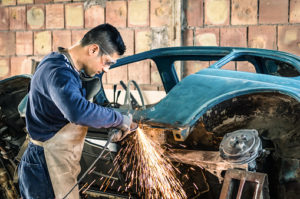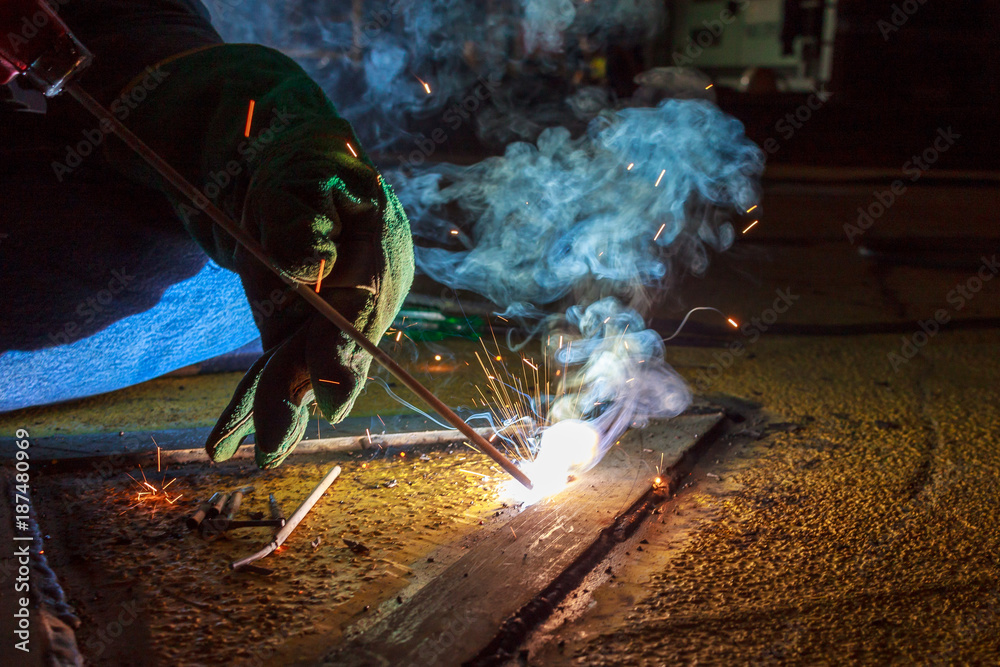Stainless steel is an excellent metal used in the fabrication of many appliances, including our eye-catching jewelry, most of our durable kitchen accessories, cookware, beautifully constructed buildings, artistic skyscrapers, and many other things where appearance and durability are essential. Stainless steel is the second most common material in modern jewelry, after gold. As a welding enthusiast, many questions come to your mind when you see so many sparkling things made of shiny metal. Like How to weld stainless steel and Does stainless steel tarnish or rust?
Stainless steel is produced using an alloy of iron that prevents oxidation and corrosion, so usually, it does not rust. However, if it is used roughly and kept in a moist environment, it will tarnish and start to erode eventually. You can weld stainless steel using arc welding processes like TIG, MIG, or flux cored.
If you are a beginner thinking about welding stainless steel and want to know whether stainless steel tarnish or rusts, then you are in the right place. This article will tell you how to weld stainless steel and does stainless steel rust.
Let’s dive deep into the topic to get answers that usually come to mind when we see products made of stainless steel.
Contents
Does Stainless Steel Tarnish or rust?
Stainless steel is corrosion-resistant because it contains chromium and nickel. These two elements form a dense oxide film with oxygen, preventing the surface from rusting or corroding. If the surface of stainless steel is scratched, it will instantly create a new oxide film.
We can better understand how and why stainless steel tarnishes if we know its properties and composition.
Composition
Stainless steel is made from the alloys like iron, chromium, nickel, magnesium, molybdenum, and nitrogen. The chromium is what gives stainless steel its corrosion-resistant qualities. Stainless steel presents 10.5 % chrome, making it 200 times more rust-free and imperviable. Contrary, other steels have a lower percentage of chromium and thus are more susceptible to rust and corrosion. Stainless steel also has higher heat resistance, making it perfect for various applications.
Properties
Stainless steel has a vast application in various industrial and domestic products. It is famous for its attractive shiny appearance, durability, heat resistance, easy fabrication, high strength as well as recyclable properties. Just put this amazing metal into working; it does not require any paint, coat, or other treatment.
Application of stainless steel
Aesthetic products

Stainless steel is used in making aesthetic products like jewelry, cookware, cutlery, and other beautiful products due to its corrosion resistance, eye-catching look, and easy maintenance. The contemporary look of this product allows it to be a functional and stylish addition to any space, whether classic or modern.
Building Construction

Most of the beautifully crystal buildings and skyscrapers you admire while traveling around are made of stainless steel. It is becoming the chief component of building construction because of its flexibility, Strength, and corrosion resistance. Stainless is mainly used to make frames for windows and gates, countertops, railings, and in making external casing of high-impact buildings. It is a regular feature in modern construction due to its weldability, attractive finish, low cost, and easy maintenance.
Medical Equipment
It is primarily adopted in a clean and sterilized atmosphere. It’s biological cleanability is comparable to glass, making it the foremost choice for producing pharmaceutical and medical equipment, including surgical and dental instruments.
Aviation Industry
Its application is not limited to home and medical appliances. Its durability, easy fabrication, heat resistance, and rust-free attributes are widely used in the aviation industry in making frames for planes, landing gears, and jet engines.
Automobiles

It is excessively used in the making of structural components of automobiles. Moreover, it is used to make exhaust pipes, trims, door handles, and grills of cars. Stainless steel is often used in transportation because it is resistant to corrosion, making it perfect for carrying chemicals, liquids, and food products. Stainless steel also requires low maintenance, which makes it easy and cost-effective to clean and sustain.
Standard methods of welding stainless steel (SS)
Being a mainly used alloy in every consumer product, stainless steel welding is very much in demand. Stainless steel (SS) can be welded like other metals, and there is no rule of thumb for welding SS.
However, the welding process of stainless steel is based on a few things, such as the material’s thickness, finishing, and the finished product’s use. You can weld stainless steel using any method. Although TIG, MIG, and spot welding are three methods regularly used by welders in the United States. If you’re curious to know more about each process, keep reading.
TIG welding
TIG welding is used in the fabrication of aesthetic products. It’ll give your workpiece a smooth, professional appearance. This welding process is perfect for thin material because it creates a low heat input. Argon gas is used for this process, but other gases can also be mixed with argon depending on the project.
One problem with stainless steel is that it often wraps and cracks during the cooling process. However, you can make minor adjustments thanks to TIG’s foot pedal, which gives you reasonable control over heat application. It prevents oxidation and increases corrosion resistance.
MIG welding
If you are going to weld a thick piece of stainless steel, MIG welding is ideal. It is a semi-automatic process because the machine controls the wire feed rate and arc length.
Due to its pulse current supply, you can weld small and hard-to-reach complex spots, and the shielding gas ( argon\carbon dioxide\helium) saves the workpiece from contamination. Thus you can produce a reliable and tough bond with MIG.
One piece of advice to get the best result with a MIG welder is to try to use the push technique, as it will allow you to see the weld and create less beading. The pull technique should only be used when deeper penetration is needed.
Spot welding
Spot welding is a type of resistance welding process. It is the best choice if you are a beginner working on a small SS project. In the Spot-welding process, pressure and heat are applied to the weld area consuming alloy copper electrodes which transport an electrical current through the weld pieces. The material melts and creates a strong bond.
Spot welding will cost you less and doesn’t require any filler material. It is a comparatively faster process that gives you semi and fully automatic control and will give your project a sleek and better appearance.
Final Thoughts
Stainless steel is a versatile alloy metal primarily used to make aesthetic products where appearance and durability matter. Mostly stainless is rust-proof and does not tarnish because the chromium oxide layer reforms automatically. But saline, salt water, bleach, sulfuric acid, and hydrochloric acid can cause stainless steel to degrade and get rust if it is not cleaned regularly.
Welding of stainless steel is a little more complex than other metals as it can crack and wrap during the cooling process. However, you can achieve a good bead weld by using proper heat, a suitable gas shield, and the right equipment. Welding of stainless steel can be done using any TIG, MIG, resistance, flux cored, or stick process. The best choice depends on your goal because each process produces a different result.






